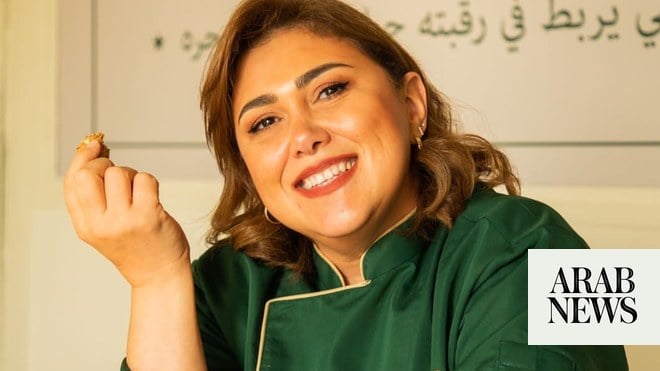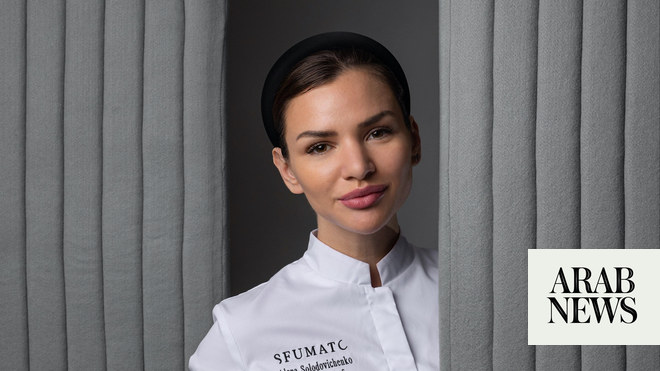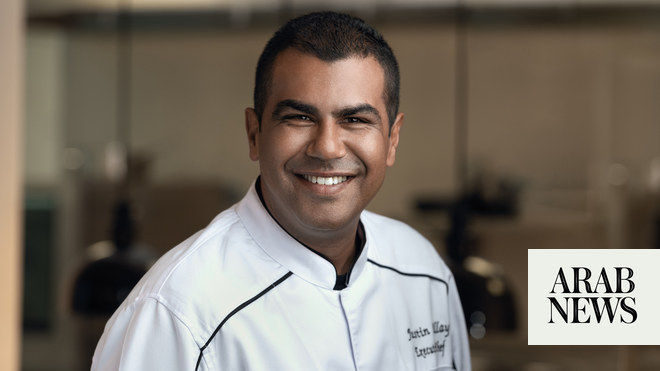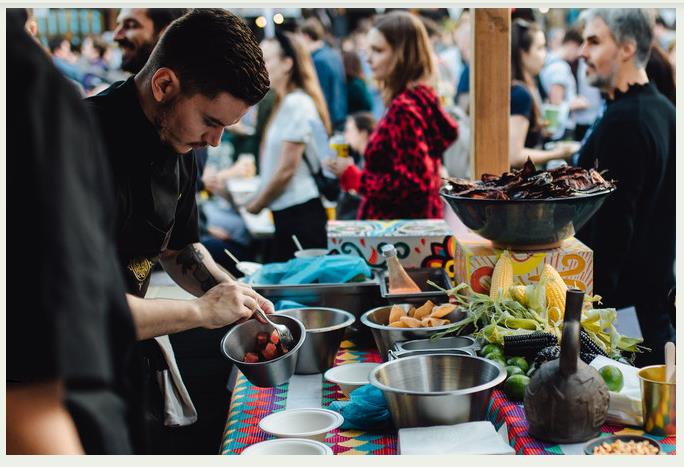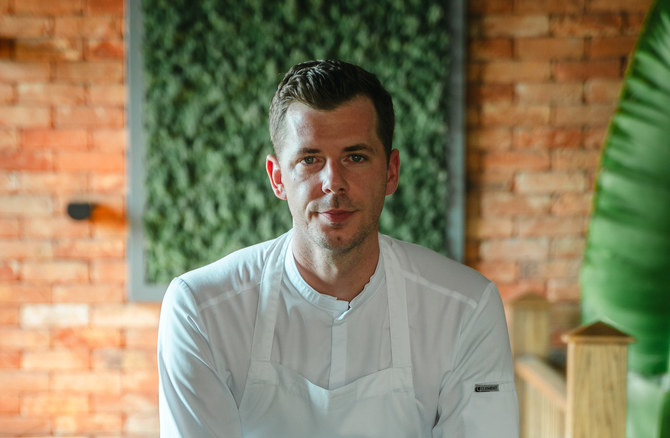
DUBAI: Serbian chef Bojan Cirjanic — currently executive chef at Folly in Dubai — had some pretty prosaic reasons to be interested in cooking.
For the latest updates, follow us on Instagram @arabnews.lifestyle
“I think most chefs go with something like, ‘My grandma was an amazing chef, she inspired me,’ and all that,” he says. “Unfortunately, for me, it’s not as romantic. My grandma was not a great cook; for her food was just fuel. But she was a very hardworking woman, and didn’t really have time to spend on cooking.”
In fact, Cirjanic started cooking “pretty much as a necessity,” he explains. “I used to spend a lot of time alone at home as a kid because my parents were working. So it was always, like, ‘Oh, there’s something in the fridge — put this in a microwave, or this, or that…’ I got bored of eating like this, so I started asking my mother to show me a few things I could cook myself. That’s how I started.” And by the time he was 15, he says, he knew he wanted to become a professional chef.
He completed cooking school in Serbia before heading to London at the age of 19 to work at The Ritz. He went on to work at several Michelin-starred restaurants across Europe before arriving in Dubai a decade ago.
Here, he discusses his favorite dish to cook, how amateur chefs can improve, and his management style.
When you started out, what was a common mistake you made?
I’m trying to think of something that isn’t going to sound embarrassing. When you walk into a professional kitchen — regardless of what you may have learned before — it’s a completely new experience. It’s, like, “What’s going on?” Cooking is something you need to experience — to feel. It’s not easy to understand that when you just read about it. So yeah, there were mistakes. I once threw chicken stock in the bin because I saw the color and assumed it was just dirty kitchen water. I proudly and happily went and told my chef, “Yeah, I cleaned that up.”
What’s your top tip for amateur chefs?
Don’t spend money on expensive gadgets or fancy equipment — the sort of thing we use in professional kitchens. You can buy a lot of that stuff now and, yeah, it sounds amazing… like, “I can make ice cream at home!” But you’re much better off spending money on good quality ingredients rather than equipment. Equipment doesn’t make good food. Good food comes from good ingredients and knowledge of what you’re doing.
What one ingredient can instantly improve any dish?
Salt. Some people think, “If I had something expensive, or considered luxurious, like a good truffle, it’s gonna taste amazing. It’s going to make the dish better.” But it won’t, not necessarily. If you didn’t get the basics right — and salt is one of the most basic ingredients — then there’s a high chance you’re going to ruin your dish rather than make it better.
When you go out to eat, do you find yourself critiquing the food?
Yeah, unfortunately I do. Not on purpose, it’s just that I’ll start looking at what they do differently from what I do. As chefs, I think we do have a tiny bit of an ego. I don’t know. They don’t teach us this in school, it just comes with comparing yourself to your peers. So, yes, I do. And naturally I want to find the mistakes. It’s probably more difficult for anyone who’s dining with me, because they’re just listening to me complaining, rather than enjoying myself.
What’s your favorite cuisine?
I don’t really have a specific favorite. I like to try new things when I get the chance to go out, and my choice is rarely based on the cuisine. It might be some famous chef from abroad, but it might just be a casual restaurant somewhere in Bur Dubai, which, by the way, is often amazing. Because you go there with … maybe not low expectations, but not with the same expectations as you would when you go to a fancy restaurant. And then you just find the food and the hospitality to be, like, ‘Wow!’
What’s your go-to dish if you have to cook something quickly at home?
I never really eat at home. But it’s embarrassing to say, “I’d just order something,” which I do all the time. But if I didn’t, then I’d just make cup noodles.
What’s your favorite dish to cook?
There are a few dishes that are kind of a tradition at home for my fiancée and me. Like, for New Year’s or Christmas, I’ll make beef Wellington. Now, that’s very difficult to do even in a professional kitchen, so you can imagine what it’s like at home. But I’ve really practiced it and it works, so I’m happy about that.
What are you like as a head chef? What’s your management style?
I take a very transparent, very fair approach. (My team) understand very well what I want to achieve and what our guests are expecting. And they know what we have to deliver. I always say that I don’t really care how we get there as long as we get there. If we can get there in a nice, easy way, we’ll do it. But if we have to push and go the extra mile, we’ll do that too. Trust is a huge part of what we do. I might come up with a dish, and it can be pretty and tasty and all of that. But if I don’t have a team of people who can execute that with or without me there, then there’s no point. So that trust has to be there.
Chef Bojan’s Folly Courgette
For courgette mousse spiral:
Blanch 130g of finely chopped courgette in boiling, salted water for 4 or 5 mins, until tender. Strain and blend in high-speed blender. Soak gelatin in ice-cold water for 5 minutes. Add to courgette (while it is still hot), with 20g mascarpone and 4g salt. Mix well. Place in mold of your choice and put in refrigerator for a few hours until set.
For pickled courgette:
Cut 1 large yellow courgette into 3mm-thick long slices. Season with salt. To make the pickling liquid, bring 75g honey to boil, add 120g of white vinegar and 2g salt. Mix well and leave to cool. Once cool, pour over the sliced courgette and leave for 10 minutes. Then drain and roll to the desired shape.
For cheese sauce:
Warm 200g milk in a small pan. In a separate pan, melt 25g butter and add 25g all-purpose flour. Cook for 4 to 5 mins. Then slowly add in the warm milk and keep whisking until combined. Cook for 2 mins and then add 65g of chopped Tunworth cheese. Whisk slowly to melt and incorporate. Season with 5g salt, then strain. Keep in fridge until serving time
For cheese balls:
Same process as for the cheese sauce, but use 200g milk; 100g butter; 100g flour; 8g salt; and 250g Tunworth cheese. Once cheese is added and melted, add 5 sheets of gelatin and mix properly. Allow to cool and set. Once cool enough to handle, roll into small balls (10-12g), coat them with egg, flour and fine breadcrumbs, and place in freezer. Before serving, remove to room temperature and fry in deep pan of oil until golden.
For roasted courgette:
Season baby green courgette with salt and roast in oven with olive oil until you see the color start to change. Remove and allow to rest for 2 minutes. Season with crushed black pepper and lime zest. Slice into smaller pieces.
When ready to serve, arrange all components as desired on plate, with cheese sauce on the bottom and all other components on the top. Top with some edible flowers, herbs and cresses.





